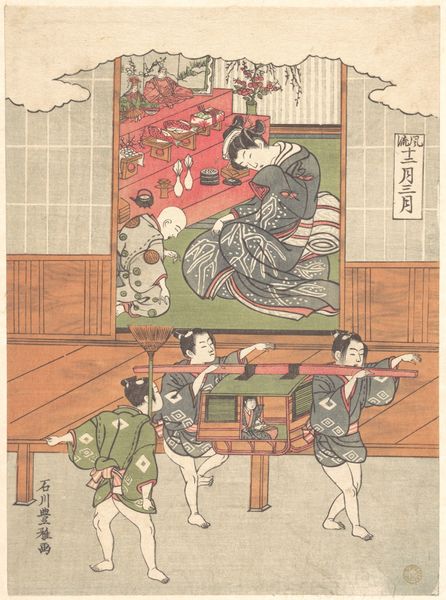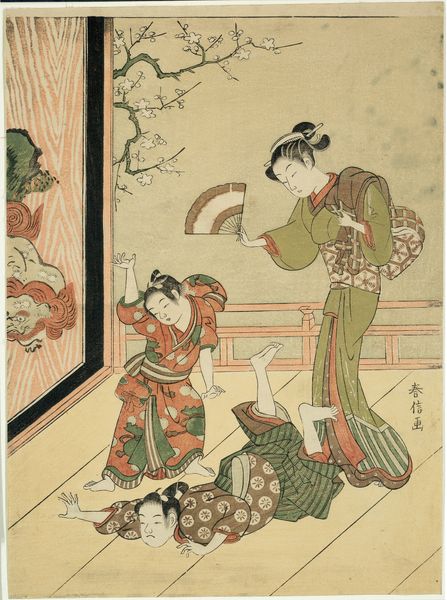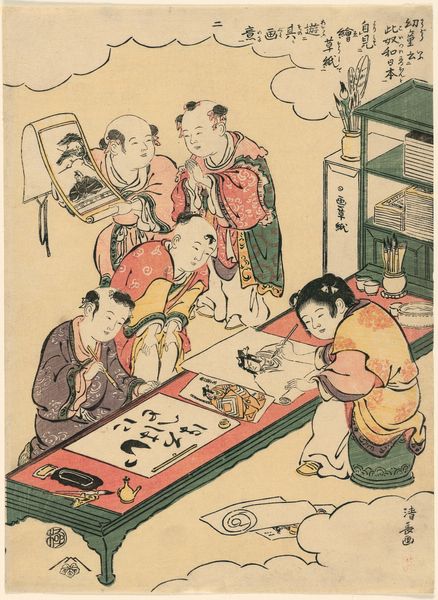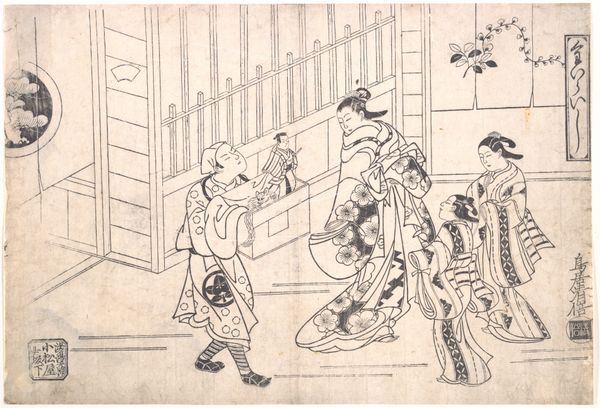
# print
#
asian-art
#
ukiyo-e
#
figuration
#
genre-painting
Dimensions: H. 10 in. (25.4 cm); W. 7 3/8 in. (18.7 cm)
Copyright: Public Domain
Curator: Allow me to introduce Ishikawa Toyomasa's print, "The Fifth Month," which likely dates between 1757 and 1777. It resides now at the Metropolitan Museum of Art. Editor: Well, immediately I notice the dynamic energy! The off-kilter angles and lively figures really create a sense of playful chaos, almost theatrical. Curator: Precisely. This Ukiyo-e print captures a genre scene—the "Boys' Day" festival, observed on the fifth day of the fifth month. These celebrations reinforced samurai values within broader society. Editor: So, this staged mock battle... it's a miniature reflection of samurai training? It has a strong symbolic purpose beyond the aesthetics? I see such formal tension in the arrangement—between the kinetic action below, and the comparatively tranquil observer looking over the balcony up above. It draws the eye in multiple directions. Curator: Indeed. Look at how Toyomasa uses bold outlines to define each figure, isolating them within the composition, and creating discrete pockets of dramatic intensity. Consider also the flattening of space – typical of Ukiyo-e – which enhances the visual impact of each gesture, each carefully placed weapon. The patterns on the kimono function like miniature abstract paintings in themselves. Editor: I'm also curious about how this was displayed and received. A print like this would have been relatively affordable, right? Making samurai culture accessible to a wider audience through this medium, subtly reinforcing those societal hierarchies? Curator: Yes, these prints were consumed by a diverse urban audience, effectively popularizing the samurai ethos. But there's also a subtext of commercialism, too, isn't there? Even the seemingly innocuous act of observation by the figure on the balcony... perhaps that figure is both within the scene, and observing it – purchasing power implicit in that separation. Editor: That’s an interesting point – and worth considering in a culture undergoing rapid social change. I find myself leaving with renewed appreciation for Toyomasa's capacity to capture cultural energies in such dynamic composition. Curator: Agreed, there's a remarkable vitality here – a snapshot of society playing itself out on a miniature, highly stylized stage. The formal and contextual layers intertwined create a surprisingly complex tableau.
Comments
No comments
Be the first to comment and join the conversation on the ultimate creative platform.













